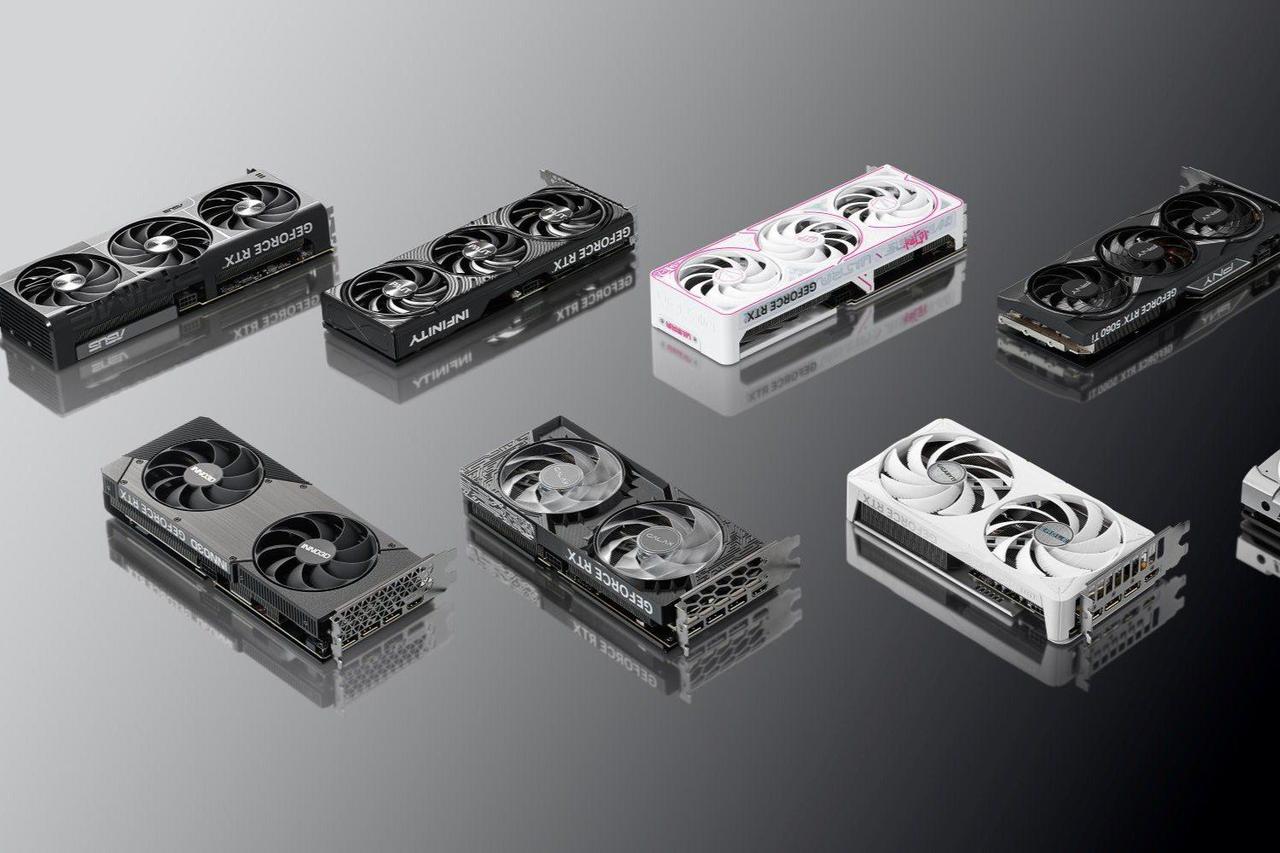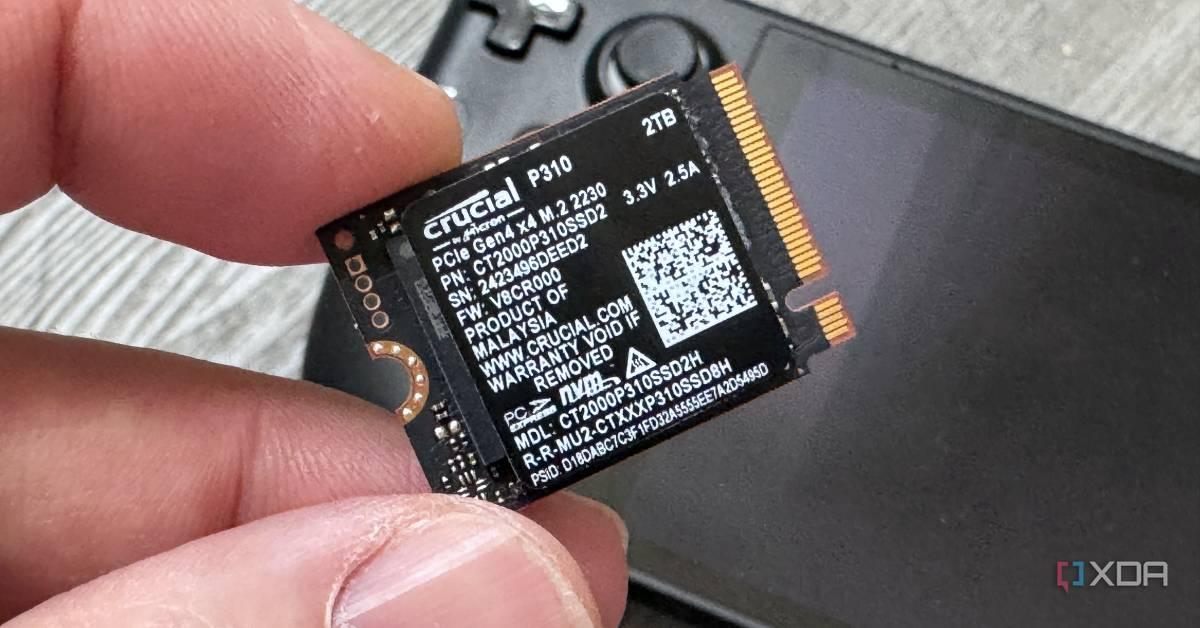NVIDIA Unveils GeForce RTX 5090 and 5080 GPUs with Advanced AI Features and Broadcast App Updates
2 Sources
2 Sources
[1]
Lights, Camera, Action: New NVIDIA Broadcast AI Features Now Streaming With GeForce RTX 50 Series GPUs
GeForce RTX 5090 and RTX 5080 GPUs feature fifth-generation Tensor Cores with support for FP4, reducing the VRAM requirements to run generative AI models while doubling performance. For example, Black Forest Labs' FLUX models -- available on Hugging Face this week -- at FP4 precision require less than 10GB of VRAM, compared with over 23GB at FP16. With a GeForce RTX 5090 GPU, the FLUX.1 [dev] model can generate images in just over five seconds, compared with 15 seconds on FP16 or 10 seconds on FP8 on a GeForce RTX 4090 GPU. GeForce RTX 50 Series GPUs also come equipped with ninth-generation encoders and sixth-generation decoders that add support for 4:2:2 and increase encoding quality for HEVC and AV1. Fourth-generation RT Cores paired with DLSS 4 provide creators with super-smooth 3D rendering viewports. The GeForce RTX 5090 GPU includes 32GB of ultra-fast GDDR7 memory and 1,792 GB/sec of total memory bandwidth -- a 77% bandwidth increase over the GeForce RTX 4090 GPU. It also includes three encoders and two decoders, reducing export times by a third compared with the prior generation. The GeForce RTX 5080 GPU features 16GB of GDDR7 memory, providing up to 960 GB/sec of total memory bandwidth -- a 34% increase over the GeForce RTX 4080 GPU. And it includes two encoders and two decoders to boost video editing workloads. The latest version of the NVIDIA Broadcast app is now available, adding two new beta AI effects -- Studio Voice and Virtual Key Light -- and improvements to existing ones, along with an updated user interface for better usability. In addition, the January NVIDIA Studio Driver with support for the GeForce RTX 5090 and 5080 GPUs is ready for installation today. For automatic Studio Driver notifications, download the NVIDIA app, including an update for RTX Video Super Resolution -- expanding the lineup of GeForce RTX GPUs that can run RTX Video Super Resolution for higher-quality video. Use the GeForce RTX graphics card product finder to pick up GeForce RTX 5090 and RTX 5080 GPUs or a prebuilt system today. Lights, Camera, Broadcast The latest NVIDIA Broadcast app release features two new AI effects -- Studio Voice and Virtual Key Light -- both currently in beta. Studio Voice enhances a user's microphone to match that of a high-quality microphone. Virtual Key Light relights subjects to deliver even lighting, as if a physical key light was defining the form and dimension of an individual. The new effects require a GeForce RTX 4080 or 5080 GPU or higher, and are designed for chatting streams and podcasts -- these are not recommended for gaming. The app update also improves voice quality with the Background Noise Removal feature, adds gaze stability and subtle random eye movements for a more natural appearance with Eye Contact, and improves foreground and background separation with Virtual Background. There's also an updated user interface that allows users to apply more effects simultaneously and includes a side-by-side camera preview option, a GPU utilization meter and more. Developers can integrate these effects directly into applications with NVIDIA Maxine Windows software development kits (SDKs) or by accessing them as an NVIDIA NIM microservice. For video editors, all GeForce RTX 50 Series GPUs include 4:2:2 hardware support and can decode a single video source at up to 8K at 75 frames per second (fps) or nine video sources at 4K at 30 fps per decoder, enabling smooth multi-camera video editing. The GeForce RTX 5090 is equipped with three encoders and two decoders. These multi-encoder and -decoder setups enable the GeForce RTX 5090 GPU to export video 40% faster than the GeForce RTX 4090 GPU and at 4x speed compared with the GeForce RTX 3090 GPU. GeForce RTX 50 Series GPUs also feature the ninth-generation NVIDIA Encoder (NVENC) with a 5% improvement in video quality on HEVC and AV1 encoding. The new AV1 Ultra Quality mode achieves 5% more compression at the same quality versus the previous generation, and the sixth-generation NVIDIA decoder achieves 2x decode speeds for H.264 over the prior version. The AV1 Ultra Quality mode will also be available to GeForce RTX 40 Series users. Video editing applications Blackmagic Design's DaVinci Resolve and Wondershare Filmora have integrated these technologies. Livestreamers also benefit from the ninth-generation NVENC with a 5% video quality improvement for HEVC and AV1 -- meaning that video quality looks like it used 5% more bitrate -- in Twitch with the Twitch Enhanced Broadcasting beta, YouTube or Discord. This improvement is measured using BD-BR PSNR, the standard for measuring video quality by comparing what bitrate matches the same video quality between two encoders. 3D artists benefit from the 32GB of memory in GeForce RTX 5090 GPUs, allowing them to work on massive 3D projects and across multiple platforms simultaneously with smooth viewport movement. GeForce RTX 50 Series GPUs with fourth-generation RT Cores run 3D applications 40% faster. DLSS 4 is now available in D5 Render and is coming in February to Chaos Vantage, two popular professional-grade 3D apps for architects, animators and designers. D5 Render will support DLSS 4's new Multi Frame Generation feature to boost frame rates by using AI to generate up to three frames per rendered frame. This enables animators to smoothly navigate a scene with 4x as many frames, or render 3D content at 60 fps or more. Developers can learn more about integrating these new tools into their apps via SDKs. Stay tuned for more updates on the GeForce RTX 50 Series, app performance and compatibility, and emerging AI technologies.
[2]
NVIDIA GeForce RTX 5090 and RTX 5080 GPU series roll out alongside Broadcast app updates
On Thursday, NVIDIA announced the worldwide availability of its GeForce RTX 5090 and RTX 5080 GPUs, which are built on the NVIDIA Blackwell architecture. Alongside these launches, NVIDIA introduced new AI features in the NVIDIA Broadcast app and released the January NVIDIA Studio Driver update. The GeForce RTX 5090 and RTX 5080, first showcased at CES 2025, are now accessible globally. These GPUs incorporate fifth-generation Tensor Cores with FP4 support, which significantly reduces VRAM requirements for generative AI models while doubling performance. For example, Black Forest Labs' FLUX models on Hugging Face now require less than 10GB of VRAM at FP4 precision, compared to over 23GB at FP16. The RTX 5090 can generate images in just over five seconds, a substantial improvement from the 15 seconds on FP16 or 10 seconds on FP8 with the RTX 4090. Both GPUs feature ninth-generation encoders and sixth-generation decoders, supporting 4:2:2 and enhancing encoding quality for HEVC and AV1. The fourth-generation RT Cores, combined with DLSS 4, ensure smooth 3D rendering. The latest version of the NVIDIA Broadcast app introduces two beta AI effects: Studio Voice and Virtual Key Light. Studio Voice enhances microphone quality to match high-end microphones, and Virtual Key Light provides professional-looking lighting. These features require an RTX 4080 or higher and are aimed at streaming and podcasting, not gaming. Additional updates include: Developers can leverage these effects using NVIDIA Maxine SDKs or NVIDIA NIM microservices. The RTX 50 Series GPUs support 4:2:2 hardware encoding and can decode up to 8K video at 75 fps or nine 4K streams at 30 fps per decoder. The RTX 5090's three encoders and two decoders enable video exports that are 40% faster than with the RTX 4090 and four times faster than the RTX 3090. Key enhancements include: Applications like DaVinci Resolve and Filmora have integrated these technologies, significantly benefiting livestreamers on platforms such as Twitch, YouTube, and Discord. The January NVIDIA Studio Driver, which supports the RTX 5090 and RTX 5080 GPUs, is now available. Users can download the NVIDIA app for automatic driver updates, including enhancements for RTX Video Super Resolution. The updated NVIDIA Broadcast app is also available starting January 30, 2025.
Share
Share
Copy Link
NVIDIA launches its latest GeForce RTX 5090 and 5080 GPUs, featuring improved AI capabilities, enhanced performance, and new Broadcast app features, marking a significant advancement in GPU technology for creators and streamers.

NVIDIA Introduces Next-Generation GPUs with AI Enhancements
NVIDIA has officially launched its highly anticipated GeForce RTX 5090 and RTX 5080 GPUs, built on the NVIDIA Blackwell architecture. These new graphics cards, first showcased at CES 2025, bring significant advancements in AI capabilities and overall performance for creators, streamers, and professionals
1
2
.Revolutionary AI Performance
The GeForce RTX 5090 and RTX 5080 feature fifth-generation Tensor Cores with FP4 support, dramatically reducing VRAM requirements for generative AI models while doubling performance. This improvement allows AI models like Black Forest Labs' FLUX to run with less than 10GB of VRAM at FP4 precision, compared to over 23GB at FP16
1
.The RTX 5090 demonstrates impressive speed, generating images in just over five seconds, a substantial improvement from the 15 seconds on FP16 or 10 seconds on FP8 with the previous RTX 4090
2
.Enhanced Hardware Specifications
Both new GPUs come equipped with ninth-generation encoders and sixth-generation decoders, supporting 4:2:2 and improving encoding quality for HEVC and AV1. The GeForce RTX 5090 boasts 32GB of ultra-fast GDDR7 memory with 1,792 GB/sec of total memory bandwidth, a 77% increase over its predecessor. It also features three encoders and two decoders, reducing export times by a third
1
.The GeForce RTX 5080 offers 16GB of GDDR7 memory, providing up to 960 GB/sec of total memory bandwidth, a 34% increase over the RTX 4080. Both GPUs include fourth-generation RT Cores paired with DLSS 4 for smooth 3D rendering
1
2
.NVIDIA Broadcast App Updates
Alongside the GPU launch, NVIDIA has released an updated version of its Broadcast app, introducing two new beta AI effects: Studio Voice and Virtual Key Light. Studio Voice enhances microphone quality to match high-end equipment, while Virtual Key Light provides professional-looking lighting for streams and podcasts
1
2
.The app update also improves existing features such as Background Noise Removal, Eye Contact, and Virtual Background. These new effects require a GeForce RTX 4080 or 5080 GPU or higher and are primarily designed for streaming and podcasting rather than gaming
1
.Related Stories
Benefits for Content Creators
Video editors will appreciate the 4:2:2 hardware support and improved decoding capabilities, allowing for smooth multi-camera video editing. The GeForce RTX 5090's multi-encoder and decoder setup enables 40% faster video exports compared to the RTX 4090 and 4x speed compared to the RTX 3090
1
.Livestreamers benefit from a 5% video quality improvement for HEVC and AV1 encoding, resulting in better stream quality at the same bitrate on platforms like Twitch, YouTube, and Discord
1
2
.Software Integration and Availability
Popular video editing applications such as DaVinci Resolve and Wondershare Filmora have already integrated these new technologies. For 3D artists, DLSS 4 is now available in D5 Render and will be coming to Chaos Vantage in February, offering significant performance boosts for professional-grade 3D applications
1
.The January NVIDIA Studio Driver, supporting the new GPUs, is now available for installation. Users can access the updated NVIDIA Broadcast app starting January 30, 2025, and purchase the GeForce RTX 5090 and RTX 5080 GPUs or prebuilt systems featuring these cards
1
2
.References
Summarized by
Navi
Related Stories
Recent Highlights
1
OpenAI releases GPT-5.2 AI model after code red memo targets Google's Gemini 3 threat
Technology

2
Disney invests $1 billion in OpenAI, licenses 200+ characters for Sora AI video generator
Technology

3
OpenAI faces wrongful death lawsuit after ChatGPT allegedly fueled murder-suicide tragedy
Policy and Regulation








